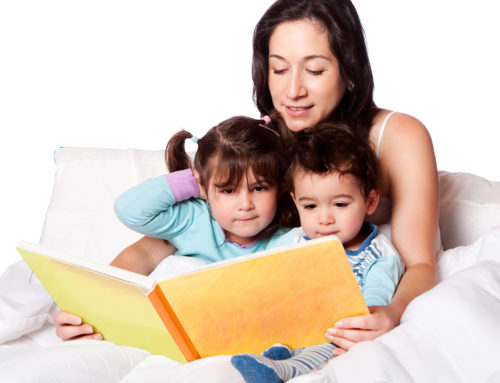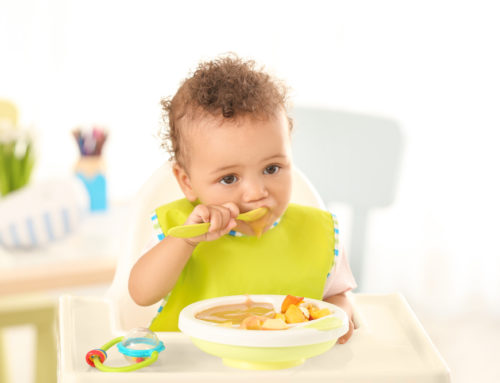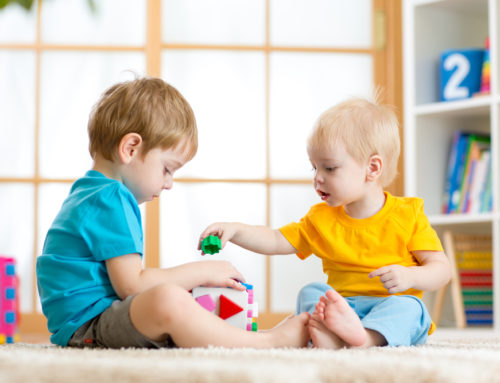_x000D_
If your baby loves to babble, consider it a blessing; it’s their way of communicating with you in their very own language. But if you’re concerned just how much chatter is appropriate for your child’s age or wondering how you can help develop their love of language, listen to what the experts have to say about cultivating healthy speech patterns for babies and toddlers.
Now Hear This
Shortly after your newborn surpasses her first few months, you can expect to hear the beginnings of speech—or cooing—as early as three months of age. “Cooing is the name for the comfort sounds made by a baby that sound like early vowels,” says Mary Reynolds-Gilmore, M.S., CCC-SLP, a speech-language pathologist based in Northport, N.Y.
This type of babble is typically followed by consonant sounds, such as m, b, p, h and w, which are easiest to produce since they only require the use of the lips. “Sounds that require more intricate control of the lips, tongue and jaw tend to develop later, such as r, l, s, z, th, sh and sounds that are blends of two sounds, like gr and pl,” she adds. These sounds usually take place around six years of age, but may vary.
By their first birthday, most toddlers have begun saying their first words. “These words tend to revolve around everyday occurrences, familiar people and items,” says Bethany Marcusson, curriculum content developer for The Learning Experience (www.thelearningexperience.com). More common words include mom, dad, hi, bye, dog, cat, no and uh oh. “The word dad has been researched as a most common first word, primarily because the d sound is easier for infants to annunciate than the m sound,” she notes.
But don’t worry if your child’s version doesn’t sound entirely recognizable. “Keep in mind that first words will likely be approximations of words and may not be articulated correctly,” says Reynolds-Gilmore. “This is normal. For example, a one-year-old may address her grandmother as ‘amma’ because they have not yet developed the speech skills to say ‘grandma.'”
Word Play
To help your child speak more fluently, experts say it’s never too early to start speaking to her. “When a parent responds to a baby’s cries, coos, utterances and babbling, it provides positive messages to the child that he or she is understood and ‘speech’ is a usable tool,” says Marcusson. “A child will be encouraged to articulate and speak sooner with hearing correct speech formation more frequently.”
But rather than concentrate on building their vocabulary in general, use every day experiences as a tool for creating a dialog with your child. “The key is not to simply teach words, but to use them in the context of communication,” she notes. “Instead of holding up a cup and saying “cup,” referring to a cup during a meal or snack time will tie in authentic learning and give a toddler a further connection for language.”
It’s also helpful to let your child take the lead when it comes to initiating a conversation. “You may know that he wants his cup, but wait for him to alternate his gaze between you and the cup, point to it and make a sound,” offers Reynolds-Gilmore. “Children who always have their needs anticipated have less of a reason to communicate.”
Another opportunity for language development is by reading together. “Books provide an excellent context for language learning,” she says. “Joint book reading between caregivers and children can increase joint attention, improve turn taking skills and expand vocabulary.” Parents can start with a simple board book and point to the pictures as they read along.
As you progress to picture books and other children’s books, don’t get too hung up on following each story, but rather pay attention to your child’s cues and read responsively, advises Marcusson. “This focuses on the importance of language and description and not necessarily reading every word…cover to cover,” she says, adding that telling your own stories and singing songs are other effective means of building vocabulary.
Spotting a Potential Delay
By the time a toddler is 18 months old, he should be saying approximately between 20 and 50 words. But you need not wait until this age to determine whether or not he is meeting this developmental milestone. Reynolds-Gilmore suggests asking yourself some helpful questions: “Is he communicating in other ways? Is he pointing, grunting, shaking his head ‘no’ or using eye gaze? Is he responding to sounds and does she seem to understand words, simple directions and questions?'”
If any of these questions raise concerns, experts suggest speaking with your pediatrician. You can also find a list of certified speech-language pathologists in your area through the American Speech-Language Hearing Association (www.asha.org) and they can arrange an evaluation. Children ages 3 and under may be entitled to a free evaluation through a local early intervention program, which can be located through your local Department of Health or referred by your child’s doctor.
_x000D_
_x000D_




